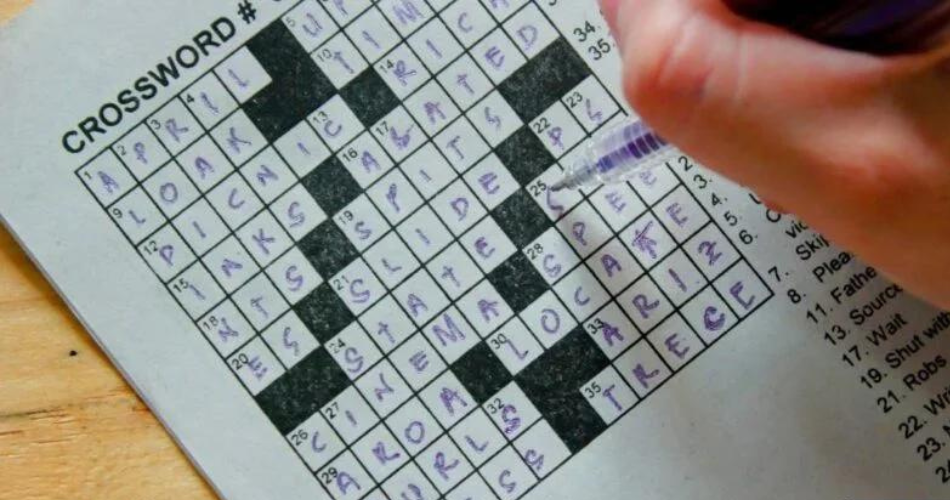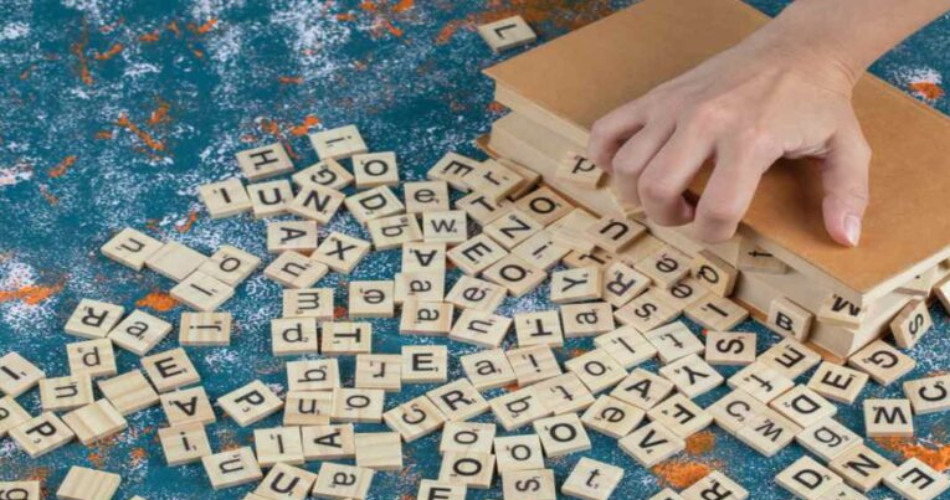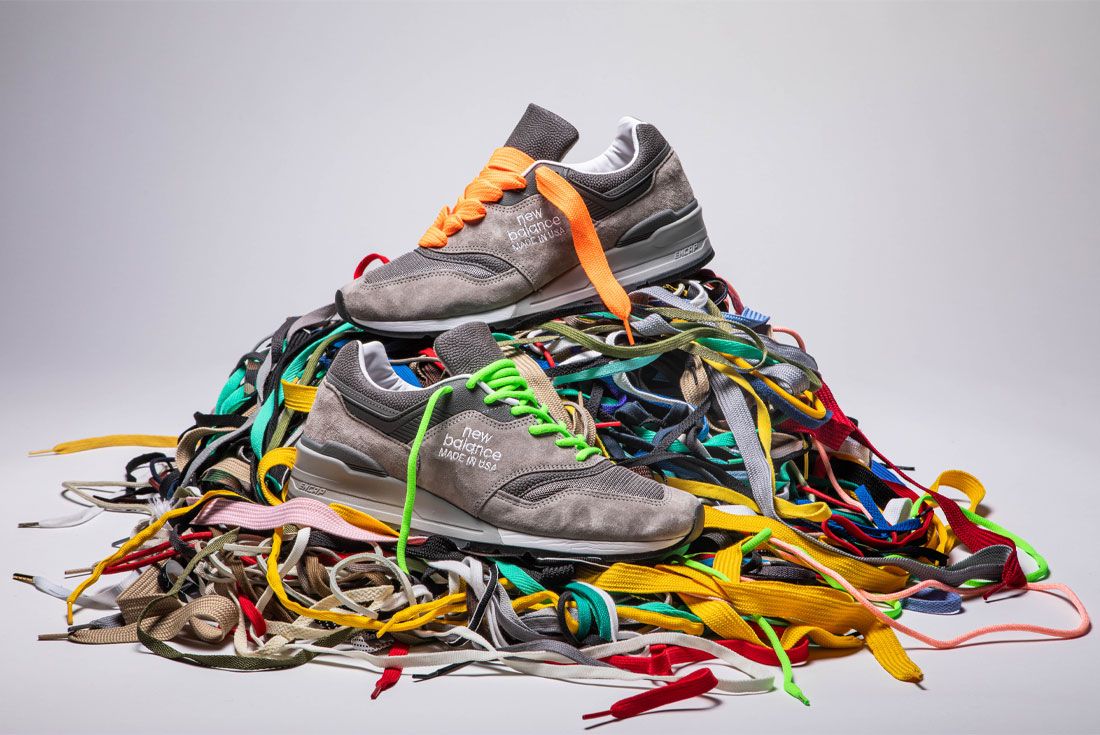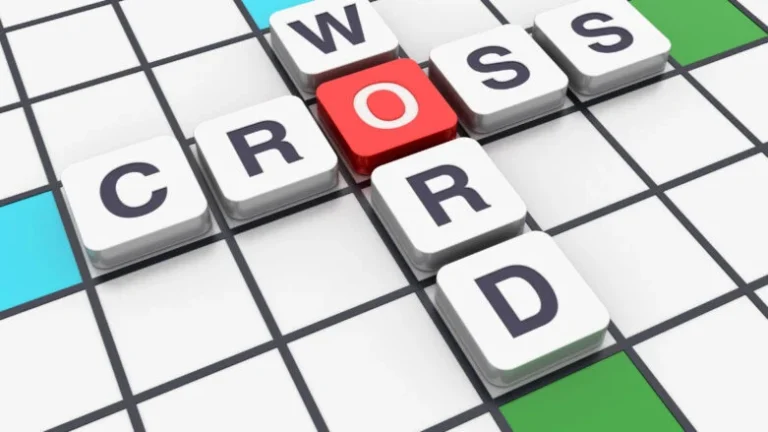Decoding ‘Lace Again As Shoelaces’: Mastering NYT Crossword Clues
Introduction
Welcome to the fascinating world of crossword puzzles, where every clue offers a new challenge and a chance to exercise your brain. Today, we’re diving into a particularly intriguing clue from the New York Times Crossword Puzzle: Lace Again As Shoelaces NYT.” This clue has sparked a lot of discussion among crossword enthusiasts.
In this article, we’ll decode the answer to this clue, delve into some interesting facts about shoelaces, and explore the occasional controversies that can arise with such puzzles. Whether you’re a seasoned solver or new to the crossword scene, understanding this clue will enrich your crossword experience and deepen your appreciation for the clever wordplay involved. So, grab your pencil and let’s get started on this crossword adventure!
Decoding the Clue: “Lace Again As Shoelaces Nyt” in the NYT Crossword
For crossword enthusiasts, deciphering a clue like “Lace Again As Shoelaces NYT” from the New York Times Crossword Puzzle can be both stimulating and perplexing. This clue challenges solvers to stretch their vocabulary and think creatively, showcasing the unique aspects of crossword puzzle construction.
New York Times crosswords are renowned for pushing the boundaries of our cognitive skills and encouraging us to view familiar terms and concepts from fresh perspectives. A clue such as “Lace Again As Shoelaces NYT” exemplifies this inventive approach. It invites solvers to explore how something as everyday as shoelaces can be connected to clever wordplay, requiring both lateral thinking and a keen sense of word relationships.
To tackle such a clue, it’s crucial to adopt a creative mindset. Begin by examining the context of the clue—what it is referring to and how it might be interpreted differently. In this instance, “Lace Again As Shoelaces NYT” hints at a term or phrase related to shoelaces that might involve a play on words or a double meaning. Understanding that crossword puzzles often rely on such nuances can guide you toward the correct solution.
By approaching the clue with a mix of curiosity and strategic thinking, you can uncover the answer and appreciate the cleverness behind the puzzle. The process of solving these clues not only sharpens your problem-solving skills but also deepens your appreciation for the art of crossword puzzle construction. So, as you engage with clues like “Lace Again As Shoelaces NYT,” remember to embrace the challenge and enjoy the intellectual journey.
Solution to the Clue
The answer to the New York Times Crossword Puzzle clue “Lace Again As Shoelaces NYT” is “RESTRING.” This word captures the essence of what happens when you lace shoelaces again, perfectly fitting the context of the clue.
“Restring” describes the act of threading shoelaces through eyelets once more, a process that’s both practical and straightforward. In crossword puzzles, the elegance of such a solution lies in its simplicity and precision. It reflects the ingenious way that crossword creators use everyday actions and objects to craft clues that challenge and engage solvers.
Solving crossword clues involves more than just matching definitions; it’s about making connections between words and concepts in clever and unexpected ways. When faced with a clue like “Lace Again As Shoelaces NYT,” it’s essential to think about the literal and figurative meanings of the terms involved. In this case, “restring” not only fits the puzzle’s requirements but also highlights how even common tasks can be represented with sophistication in crossword clues.
Crossword puzzles are designed to test your ability to think laterally and apply logic. The clue “Lace Again As Shoelaces NYT” demonstrates how straightforward answers can be both satisfying and elegant. As you tackle challenging clues, remember that often the most fitting solution is one that aligns perfectly with the clue’s context and maintains logical consistency. This approach will enhance your crossword-solving skills and deepen your appreciation for the art of puzzle construction.
Fun Facts about Shoelaces and Crossword Puzzles
Shoelaces and crossword puzzles might appear to be worlds apart, but they both have rich histories and intriguing quirks that make them fascinating to explore.
Shoelaces, a seemingly mundane item in our daily lives, have been around for centuries. Their evolution reflects changes in fashion and technology. Historically, shoelaces were made from natural materials like leather and hemp, which were practical for their time. With advancements in textile manufacturing, modern shoelaces are crafted from a variety of materials including nylon, polyester, and elastic, offering both durability and style. Some interesting facts about shoelaces include their use in sports and fashion, where different lace patterns and techniques can significantly impact both function and aesthetics. For example, athletes often use specific lacing techniques to enhance comfort and performance, while fashion-forward individuals might choose laces to complement their outfit.
Crossword puzzles, on the other hand, have a more recent history but are equally captivating. The first crossword puzzle was published in 1913, created by Arthur Wynne and appearing in the New York World newspaper. Since then, crosswords have evolved into a beloved pastime with a global following. They are renowned for their ability to challenge and entertain, using wordplay, puns, and general knowledge to engage solvers. An interesting aspect of crosswords is the intricate balance between clue difficulty and answer fit, which keeps solvers coming back for more. The evolution of crosswords has also led to the development of various styles and formats, from classic grids to themed puzzles that add an extra layer of complexity and fun.
Both shoelaces and crossword puzzles offer more than meets the eye. They reflect cultural shifts, technological advancements, and human creativity. Exploring their histories and unique aspects provides a deeper appreciation for these everyday elements, showing how even the simplest things can have fascinating stories and significance.
The History and Evolution of Shoelaces
Shoelaces have played a crucial role in footwear for centuries, with their history tracing back to the 17th century. Initially, they were crafted from leather, reflecting the materials commonly used for practical items of that era. Leather was favored for its durability and strength, providing a reliable means to fasten shoes securely.
As time went on, the materials used for shoelaces evolved significantly. By the 19th century, cotton became a popular choice, offering a more comfortable and flexible option. Cotton laces were easier to work with and could be dyed in various colors, adding a touch of style to footwear.
The 20th century brought even more innovation with the advent of synthetic fibers. Nylon, polyester, and other man-made materials were introduced, offering increased durability and resistance to wear and tear. These modern materials also allowed for the creation of laces with special properties, such as elasticity or water resistance, enhancing their functionality for different uses.
Today, shoelaces are not just about function but also about fashion. They come in a wide range of colors, patterns, and textures, allowing individuals to personalize their footwear to match their style. There are even specialty laces designed for specific activities, like athletic laces that prevent slipping or reflective laces for increased visibility in low-light conditions.
This evolution reflects the ongoing improvements in both style and practicality, demonstrating how even the simplest items can adapt and transform over time. Shoelaces have moved beyond their basic function to become an integral part of personal expression and innovation in footwear design.
The Rise of Crossword Puzzles
Crossword puzzles have a fascinating history, becoming a popular pastime in the early 20th century. Their rise in popularity is often attributed to the New York Times Crossword Puzzle, which has become a cornerstone of the genre. Known for its intricate design and clever clues, the New York Times Crossword attracts a devoted audience of solvers who eagerly await each day’s challenge. The puzzles are celebrated for their ability to engage and stimulate the mind, offering a mix of wit, wordplay, and intellectual challenge.
One intriguing aspect of crossword puzzles is how they incorporate everyday items into their clues. Take, for example, the clue “Lace Again As Shoelaces Nyt.” This clue is a prime illustration of how commonplace objects are cleverly woven into the fabric of crossword puzzles. The clue requires solvers to think about everyday items, like shoelaces, in a fresh and inventive way. It challenges them to connect the concept of “lacing again” with the action of re-threading shoelaces, resulting in the answer “RESTRING.”
Such clues highlight the playful and creative nature of crossword puzzle construction. They demonstrate how ordinary elements of daily life can be transformed into engaging wordplay, offering both a mental workout and a touch of amusement. By integrating familiar objects into their puzzles, crossword constructors not only test solvers’ knowledge but also showcase the imaginative ways language and everyday experiences intersect in the world of puzzles.
Controversy Surrounding the Clue and Its Answer
The New York Times Crossword Puzzle frequently ignites lively discussions, and the clue “Lace Again As Shoelaces Nyt” is a perfect example of this. The clue sparked a range of reactions from crossword enthusiasts, showcasing the diverse perspectives within the crossword community.
The solution to this clue, “Retie,” drew both praise and criticism. Some solvers felt that “Retie” was too simplistic and didn’t meet the high expectations often associated with NYT crosswords. They argued that the clue lacked the intricate wordplay and complexity usually celebrated in the puzzle. For these critics, the answer seemed too straightforward, falling short of the cleverness typically expected from such a renowned crossword.
On the flip side, supporters of the answer appreciated the way “Retie” fit seamlessly with both the clue and the overall puzzle. They saw the answer’s simplicity as a reflection of the puzzle’s elegant design and its ability to deliver a straightforward solution in a context that might initially seem more complex. For these solvers, the perceived simplicity of “Retie” was a testament to the refined craftsmanship of the puzzle, demonstrating that effective clues don’t always need to be overly complicated.
This debate highlights an important aspect of crossword solving: the balance between challenge and clarity. It’s not just about finding the right answer but also about interpreting clues in creative and often nuanced ways. The conversations around clues like “Lace Again As Shoelaces Nyt” emphasize the artistry and skill involved in both constructing and solving crosswords. They reveal how crossword puzzles serve as a platform for both intellectual engagement and creative expression, reflecting the diverse tastes and expectations of their audience.
Possible Alternate Answers and Explanations
In the realm of crossword puzzles, it’s quite typical for a single clue to lead to multiple possible answers. This phenomenon is especially true for the New York Times Crossword Puzzle clue “Lace Again As Shoelaces Nyt.” This clue, in particular, opens the door to several alternative answers, each offering its own unique fit and interpretation.
For example, while “Retie” is a straightforward answer, suggesting the action of lacing shoelaces again, other potential answers might also make sense depending on how one interprets the clue. Alternatives like “Restring” could be considered, as it implies the act of re-threading or re-lacing shoelaces, capturing a similar idea. Similarly, “Re-lace” directly aligns with the clue’s context and action, although it might not fit as neatly into the puzzle’s constraints.
These variations highlight the flexible and sometimes ambiguous nature of crossword clues. They underscore the importance of considering different angles and interpretations when solving a puzzle. Crossword constructors often craft clues with multiple layers of meaning, making it essential for solvers to think creatively and explore various possibilities.
The presence of alternative answers not only adds depth to the solving experience but also reflects the complexity and nuance that crossword enthusiasts enjoy. It challenges solvers to think critically and engage with the puzzle on a more profound level, exploring different meanings and word choices to find the best fit.
Tighten
One effective way to describe the action of securing shoelaces is by using the term “tighten.” This word captures the essence of adjusting shoelaces to ensure they are snug and secure. When you tighten shoelaces, you are essentially pulling them to make sure they fit properly and hold firmly, preventing them from loosening throughout the day.
“Tighten” is a clear and direct term that focuses on the practical aspect of securing footwear. It emphasizes the importance of having laces tightly bound so they don’t come undone, which can be crucial for both comfort and safety. A well-tightened lace keeps your shoes fitting comfortably and prevents tripping hazards caused by loose laces.
Your Guide to the Newest Trends: pllsfored
The action of tightening shoelaces involves pulling the laces through the eyelets, ensuring they are even and snug across the top of the shoe. This process can be particularly important in sports and active environments, where a secure fit is essential for performance and stability.
Understanding the concept of “tighten” in the context of shoelaces helps illustrate a fundamental aspect of footwear maintenance. It’s not just about making the shoes look tidy but also about ensuring they function properly and provide the support needed for various activities.
Fasten
Another term that effectively describes the action involving shoelaces is “fasten.” To “fasten” means to secure or attach something firmly, and when applied to shoelaces, it refers to the act of ensuring that the laces are properly tied and held in place.
Using “fasten” in the context of shoelaces focuses on the overall goal of keeping the laces securely in position, which is crucial for both comfort and safety. It implies that the laces are affixed correctly, so they don’t come undone, which can prevent tripping and ensure the shoes function as intended.
However, while “fasten” conveys the idea of securing the laces, it doesn’t delve into the specifics of adjusting them to achieve a perfect fit. Fastening is more about the final step of ensuring the laces are tightly secured, rather than the detailed process of adjusting them for the best fit. For example, when you fasten shoelaces, you are making sure they stay in place once they have been adjusted to the desired tightness.
Understanding the term “fasten” in relation to shoelaces helps to appreciate its role in the overall process of shoe maintenance. It’s about the end result—ensuring that the laces don’t come loose—but it does not cover the nuances of how the laces should be tightened or adjusted for optimal comfort and functionality.
Secure
Another term that comes to mind when discussing shoelaces is “secure.” To “secure” something means to ensure that it is firmly in place and cannot easily move or come loose. When applied to shoelaces, “secure” means making sure the laces are firmly fastened so they won’t untie or shift while in use.
While “secure” effectively conveys the end goal of keeping the laces firmly held, it may not fully capture the specific steps involved in adjusting or re-lacing them. The term focuses on the outcome—ensuring that the laces stay in place—but doesn’t delve into the details of how the laces are adjusted or threaded through the eyelets to achieve that firm hold.
Each of these terms—“tighten,” “fasten,” and “secure”—offers a different perspective on managing shoelaces:
- Tighten emphasizes the process of adjusting the laces to achieve the right level of snugness.
- Fasten refers to the act of ensuring the laces are properly tied and held in place, focusing on the final step of securing them.
- Secure highlights the ultimate goal of keeping the laces firmly in place but doesn’t necessarily describe the process involved in getting them to that state.
Exploring these alternative terms enriches our understanding of how we manage and maintain our shoelaces. Each term adds a layer of nuance to the discussion, illustrating different aspects of the same action. This not only deepens our appreciation of the language but also enhances our grasp of how we secure and adjust our footwear for optimal performance and comfort.
FAQs
1. What does the clue “Lace Again As Shoelaces Nyt” mean in crossword puzzles?
The clue “Lace Again As Shoelaces Nyt” is a clever play on words in crossword puzzles, asking you to think about a term related to adjusting or re-lacing shoelaces. The answer, “RESTRING,” perfectly captures the action of threading shoelaces through eyelets once more.
2. Why might “RESTRING” be chosen as the answer?
“RESTRING” is chosen because it directly reflects the action of putting shoelaces back through their eyelets. The term succinctly describes the process of re-lacing, which fits well with the clue’s wording and context.
3. What are some alternative terms related to managing shoelaces?
Other terms related to managing shoelaces include “tighten,” “fasten,” and “secure.”
- Tighten: Focuses on adjusting the laces to make them snug.
- Fasten: Refers to the act of ensuring the laces are properly tied.
- Secure: Emphasizes keeping the laces firmly in place.
4. Why do crossword clues sometimes have multiple valid answers?
Crossword clues can have multiple valid answers because they often require creative thinking and lateral reasoning. Different terms might fit the clue depending on how one interprets the wording, context, and intersecting letters.
5. How can I improve my crossword puzzle-solving skills?
To improve your crossword-solving skills, practice regularly, pay close attention to clues and their nuances, use crossword dictionaries and online resources, and participate in crossword communities. Engaging with different puzzle themes and learning from others can also enhance your solving abilities.
Conclusion
Navigating crossword puzzles like the New York Times’ “Lace Again As Shoelaces Nyt” clue can be both challenging and rewarding. Understanding the term “RESTRING” helps illuminate how creative wordplay connects with everyday actions, such as adjusting shoelaces. Exploring alternative terms like “tighten,” “fasten,” and “secure” provides a broader view of how we manage our footwear and adds depth to our understanding of crossword clues.
By diving into the intricacies of crossword puzzle construction and solving, enthusiasts can appreciate the cleverness behind each clue and enhance their problem-solving skills. Whether you’re a seasoned solver or new to the game, embracing the complexity and creativity of these puzzles will enrich your experience and sharpen your abilities.
Keep an eye for more news & updates on Don Guides!






